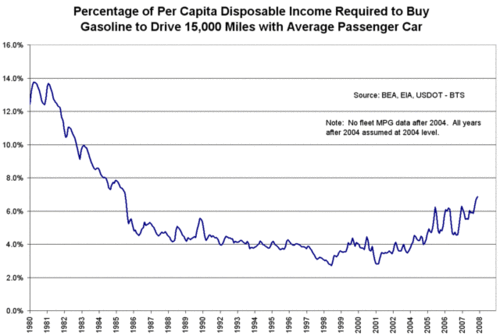How Does This New Trade Deal Offset My Higher Costs If I Don't Grow Soybeans?
Trump supporters are saying "I told you so" as Trump and European officials reached an agreement to dial back tariffs and pursue some efforts at free-er trade. Trump supporters have argued, and I was skeptical, that Trump really wanted free trade but was engaging in brinkmanship as part of the opening phases of negotiation. First, let's see exactly what this agreement included:
– They will work towards “zero tariffs, zero non-tariff barriers, and zero subsidies” on non-auto industrial products. That’s not a huge category of goods, as it excludes agriculture and raw materials, among other things, and zero non-tariff barriers and subsidies seems really unlikely. But still, it would be great if we made progress here.
– The EU will buy more U.S. soybeans and liquid natural gas. This was probably going to happen anyway because of market shifts and other factors.
– They will have a dialogue about conflicting regulatory standards in the U.S. and EU. This is a long-time goal of U.S. and EU trade policy-makers. It sounds easier than it really is.
– They will work together on reform of the WTO, and to address problems to the trading system caused by China.
In addition, the agreement effectively included:
- Current Trump tariffs on steel and metals, and the European retaliation, will remain in place
- Trump will not currently put in place his threatened $200 billion in auto tariffs on European vehicles
So the basic agreement is 1) leave all new tariffs in place; 2) sell more soybeans and natural gas to Europe; and 3) talk about tariff and non-tariff barriers that typically consume years and years of discussion.
This is basically a big zero. Even beyond the fact that the agreement avoids most of the major trade categories, the act of negotiating towards lower tariffs, lower non-tariff barriers, and reconciling conflicting regulator standards has been done before -- its called NAFTA and the TPP, both of which Trump has sh*t on. Sure, they can have flaws (especially the TPP), but these compromises are the only way these trade deals get made, as country leaders each are in thrall to their own influential crony industry. The US's own high tariffs on SUV imports is a great example. This is all not to mention the time -- TPP negotiations took 8 years -- through which we consumers apparently will still suffer under Trump's tariffs.
So for most US consumers, the end result of all of this is that we still are paying higher prices for any product that contains metal, from soda cans to automobiles. This is great for soybean farmers, I suppose, but sucks for the rest of us. This is all about politicians balancing one crony against another and in this calculus, consumers always lose.
Trump says he is for free trade, but he still spouts all this fairness BS. Things that he considers "unfair" are actually just "unfair" to a few people in a few industries, but are eminently "fair" for 300 million consumers in the US. Here is the true test of a free trader:
Consider two trade regimes. In Regime #1, the US charges 0% tariffs on German steel and Germany charges 0% tariffs on US steel. In Regime #2, the US is able to charge 10% tariffs on German steel while Germany still charges 0% tariffs on US steel. I would bet quite a bit of money that Trump would say that Regime #2 is a better deal for the US, while free traders like myself and most economists would say that Regime #1 is not only better for the world as a whole, it is better for the US. Zero tariffs allows the division of labor and comparative advantage to all work their magic to make sure capital and productive effort in this country are employed for the highest return.


